The windowsill is not only a mandatory constructive, but also aesthetic, but ...
|
|
The durability of the walls of a private house and comfortable living in it directly depend on ... |
The glazing of the facade is a rather complicated process, but the result is worth ... |
We glue the wallpaper on the drywall base. Choose drywall for wallpaper
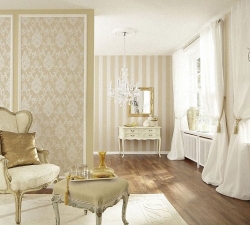
Wallpaper is one of the most popular types of walls. The coating is characterized by an attractive appearance, installation takes several hours, and the cost of materials is quite affordable. The surface before finishing requires careful preparation, because the presence of the slightest flaws and cracks leads to a decrease in the life of the coating. The best option is to install a plasterboard base for its further decoration with wallpaper. Learn about the choice of drywall under the wallpaper and you will receive valuable tips from specialists in decorating the premises.
Table of contents:
- Chipscardon's choice - specialists' advice
- Gypsum -plastic decoration for wallpaper
- Choose a tool for gluing on drywall
- Instructions for the installation of wallpaper on drywall
Chipscardon's choice - specialists' advice
The main component of drywall is a flat core based on gypsum, the appearance of the coating contains a cardboard laid in a minimum of three layers on each side. The design is characterized by high rigidity and additional protective characteristics.
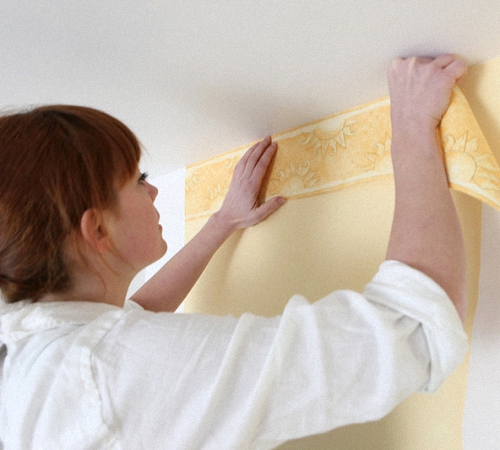
In the ratio with the appointment, we highlight several varieties of drywall:
1. Standard drywall sheets - has a light gray color, differs in the most affordable cost. This material is sheathed with metal and wooden frames. Not suitable for rooms with high humidity.
2. Moisture -resistant drywall sheets - are distinguished by universal use and increased strength. Most often, it has a green color and blue designations in the form of marking. Modified additives in the composition contribute to the improvement of hydrophobic material. Used for decoration of bathrooms, bathrooms and kitchens. Painting sheets with standard coating waterproofing makes the material even more moisture resistant and suitable even for wall decoration in the shower. Suitable for trim.
3. GKLVO - is distinguished by good opposition to both moisture and fire. It is painted green and has a red marking. The cost is quite high, most often the material is used for production purposes for decoration of industrial premises.
Follow the storage conditions of the material, the room should not be damp and high humidity. Pay attention to the appearance of drywall - the presence of dents, scratches and other mechanical damage, indicates that the material was carelessly transported. Choose a product from leading manufacturers, do not go to cheaper options. High -quality drywall is characterized by a homogeneous texture, lack of mechanical damage and attractive appearance.
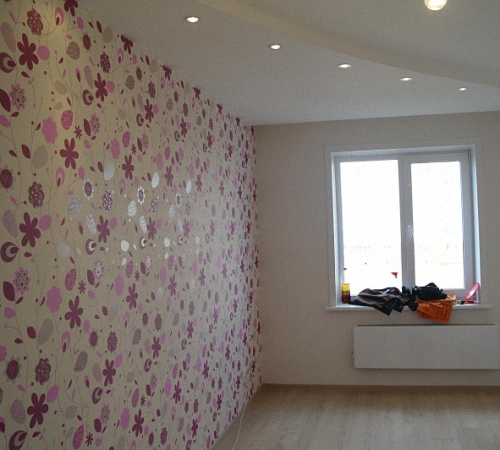
Gypsum -plastic decoration for wallpaper
Preparation of drywall for decoration with wallpaper is a phased process. Each item is mandatory.
Start working with a primer, thanks to which the adhesion between putty and coating improves. In addition, the soil protects the wall from the development of the fungus and mold, additionally performing the antiseptic function. We recommend using acrylic primer, which is ideal for a drywall base.
There are two types of primer:
- ready;
- Composite.
The first option is mixed and applied directly to the base. The second is a combination of several components connected in certain proportions. To apply glue, use a regular brush, try to evenly distribute the composition on the wall. After processing the surface, wait for the full drying of the primer, only after that, proceed to the next stage of work. The drying time is indicated by the manufacturer in the instructions.
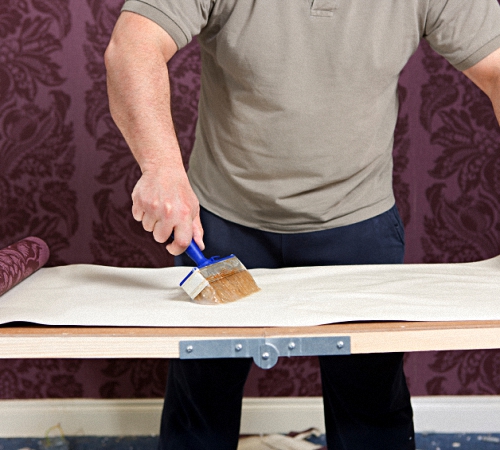
Next, the process of installing the Serpi is followed by the joints between the sheets of drywall. Buy a fiberglass -based tape, the adhesive composition should be on it, due to which the material is tightly connected to drywall. With a loose fit of the Serpi, additionally apply a PVA glue layer to it.
Next, the process of shallowing joints between the sheets of drywall follows. Put the previously prepared putty into the joints, smooth it with a spatula. After drying the material, polish the surface with sandpaper with fine -grained type.
Without fail, put the walls before gluing wallpaper. Neglect of this action leads to a decrease in the life of the coating. In addition, it is impossible to remove wallpaper glued to drywall, they will be dismantled directly with cardboard. Light wallpaper, after drying, can be covered with seams. Therefore, before starting the finish - put the walls without fail.
The option of independent manufacture of putty or acquisition of it in the finished form is possible. In the first case, the presence of gypsum with cement, which in the correct proportion is connected with water, will be required.
There are three options for putty - starting and finish, universal. With the help of the starting composition, the walls are aligned, the finish - gives them maximum smoothness. To prepare the solution, you need a capacious container and water. To make the mixture a homogeneous and high -quality, we recommend using a construction mixer.
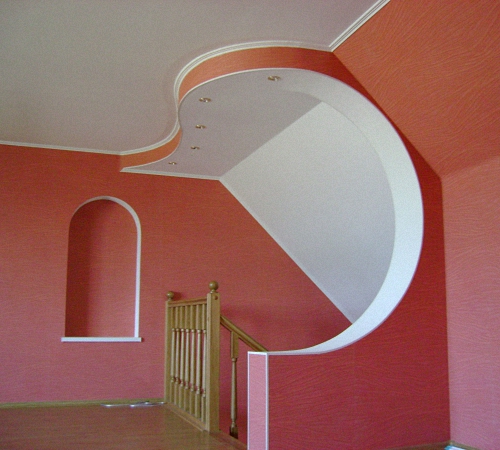
For putty gypsum -plated base, three spatula options are used. The first, the smallest size, is used to move putty from the tank, in which it is located to the second spatula, the main function of which is the application of the composition to the wall. The third tool helps to level their putty on the plasterboard wall. Follow the uniformity of the putty layer, the movements should be smooth, even and circular. Keep the tool at an angle at forty -five degrees with respect to the wall. The thickness of the putty layer should exceed two millimeters. After smoothing the solution, with the help of a small spatula, remove the remnants of the putty mixture. After applying putty, warm the wall again.
The next one is an equally important stage - a grip of drywall walls. For these purposes, use sandpaper of different granularity - first large and then small. Pay special attention to this process, since the duration of operation of the coating directly depends on the quality of its implementation. Do not overdo it, too careful grouting leads to the formation of cracks on the surface. Before starting work, put on the mask and protection for the eyes, since caustic dust negatively affects human health.
After grouting the walls and obtaining a perfectly even base, apply a primer again. In this case, the composition will strengthen the wall, remove excess dust and reduce the porosity of the base. Wallpaper, after processing the wall with a primer, will be better to stay on it. Apply at least two layers of the solution, while wait for the complete drying of the previous one before applying the next.
The finish of the plasterboard base for the wallpaper is a very complex process, for which it is necessary to stock up on the necessary tool, material and skills in working with them. As a result, the finished coating acquires maximum evenness and smoothness.
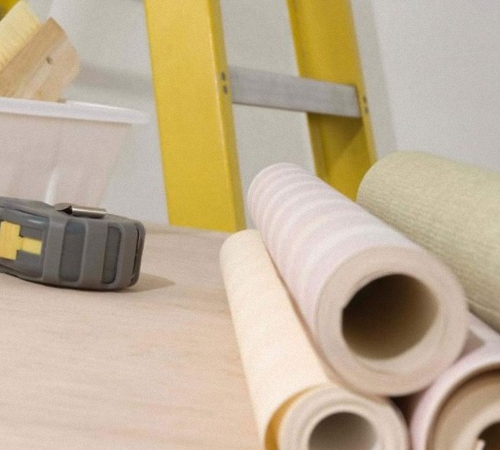
Choose a tool for gluing on drywall
A properly prepared tool is the key to successful work on wallpaper gluing. Indeed, in the process of work, it is not allowed to create a draft, and actually go from the room to the room for tools, so make a list of objects that you need in advance.
First of all, stock up on a simple pencil and level, with their help you will draw the installation lines of each canvas. To breed glue, you will need a bucket, water, a construction mixer. Pour glue into a rectangular bath, for a more convenient application. The brushes of different sizes and rollers will help in applying the adhesive and primer both in large areas and in hard -to -reach places.
The roulette will help to measure the length of the canvas, if you choose wallpaper without selection, then they are cut in advance with a margin of 10 cm. Using the plumb line, they control the correctness of the installation of the first canvas, it is it that is the key to high -quality finishes. The tools will help to arrange the corners in the form of a square and a transporter. For the manufacture of curly cutouts and for cutting paintings, prepare scissors and a stationery knife.
To dismantle outlets, switches, prepare a screwdriver of the desired shape. To remove joints, use the butt roller. The final smoothing is performed by a plastic tool. It will be possible to remove unnecessary segments of the canvas using a steel wide spatula. In addition, stock up on a sponge and a damp clean rag to remove glue. In order to protect the ceiling and the floor from glue, set the painting tape.
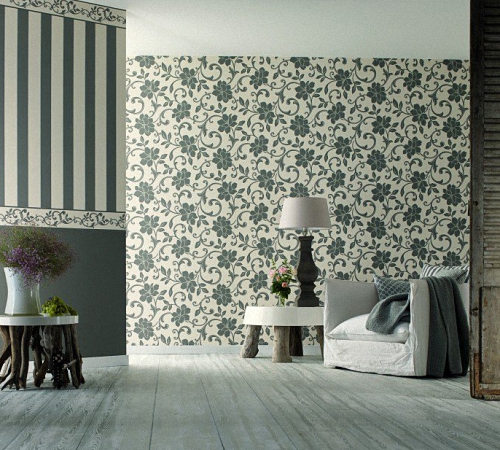
There are three options for rollers used in wallpapering:
- butt;
- adhesive;
- Corner.
In addition, such nozzles for the roller are distinguished:
- based on polyamide;
- fur;
- Based on foam.
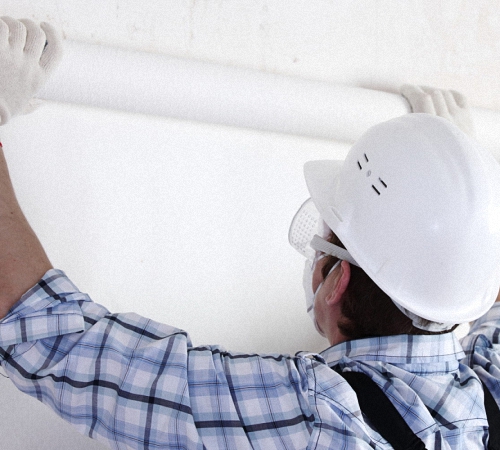
With the help of a fur nozzle, glue is applied to the canvas and on the wall, if necessary. The rubber roller is used to remove air and smooth the canvas. They process the joints with a plastic roller.
The plumb line is used at the beginning of the work, with it, measure the first line. The option of replacing plumbing with a laser level is possible.
Glue for wallpaper and drywall use universal. The option of adhesive substance is determined by the type of wallpaper installed in the room. Make sure that a sufficient amount of adhesive substance, anti -info and antiseptic additives, starch and cellulose is present in the composition.
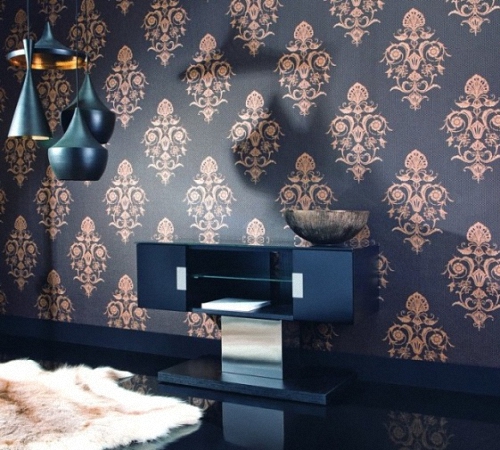
Instructions for the installation of wallpaper on drywall
First of all, apply vertical marks on the wall, compare them with the width of the roll canvas. Using this marking, it is possible to determine the amount of material for work. In the presence of a complex pattern, add to the resulting value +15% to compensation for the docking.
Different wallpapers are glued to the drywall base:
- paper;
- non -woven.
Before starting work, de -energize the room, dismantle the sockets and switches, if possible, free the room from furniture and household appliances. The room temperature should be from 17 to 23 degrees. Take care of the absence of drafts, close all the windows and doors tightly. Until the glue dries completely, it is not recommended to ventilate the room.
Prepare the adhesive composition according to the instructions. Dry powder gradually pour into a container with warm water. Mix until the consistency of the composition becomes homogeneous. The instructions indicate the time of upsetting the glue, wait from 5 to 20 minutes. Before further use of the composition, constantly mix it.

To apply glue, use a special roller. We recommend covering with glue both a wall and a canvas. Stick the sheet gradually, from top to bottom, leaving it on the surface. To smooth the sheet use a rag or a special plastic roller. The sheets are glued without observing the overlap. Pay attention to the corners, first glue the upper part of the canvas, and then gradually move to the bottom.
Stick the first strip near the window, thus, it will be possible to reduce the visibility of the joints. Install the following canvases, focusing on the first. After completely drying the paintings, cut them.
If you glue the wallpaper on a regular drywall, then you should not moisten the wall with glue. Apply the composition only to the wallpaper.
Among the advantages of gluing wallpaper on drywall, we note:
- attractive appearance of the coating;
- the possibility of gluing any wallpaper;
- ease of work;
- affordable cost of materials;
- speed of finishing;
- A variety of color and texture solutions.
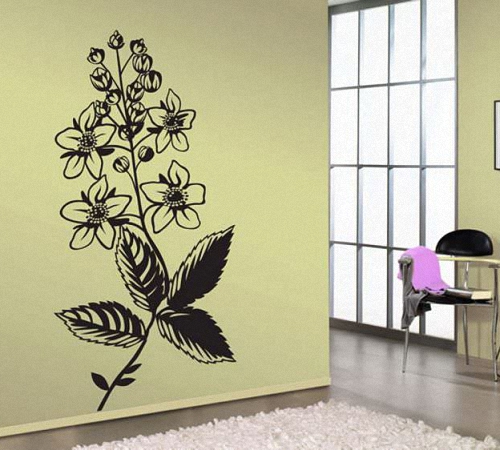
In general, wallpaper is an ideal option for decorating a drywall base. They are lightweight, do not load the structure, and will last you, with proper care for more than ten years.
Wallpaper on drywall video:
